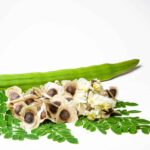Harvest season is here, and there’s nothing quite like the feeling of watching your pumpkins grow! Whether you’re a seasoned gardener or a first-time planter, taking care of pumpkins can be an exciting and rewarding experience. With the right preparation, soil, and care, you can have your own pumpkin patch in no time.
Picture yourself walking through a lush garden full of vibrant orange pumpkins. These plump fruits are the stars of autumn, adding warmth and beauty to any outdoor space. With some patience and effort, you can have your own pumpkin patch in no time! Growing pumpkins is surprisingly simple and fun for both children and adults alike.
Let’s explore how to grow, harvest, and care for your pumpkins so that you can create a beautiful pumpkin patch this fall season! You’ll learn about the necessary steps to plant healthy seeds, how to best water them as they grow, when to harvest them with precision—and more!
Select A Suitable Variety For Your Climate
Irony alert! Growing pumpkins may sound like a piece of cake, but that couldn’t be further from the truth! It takes careful planning and preparation to get them just right. But don’t worry, with these tips you can have your own pumpkin patch in no time.
The first step in growing your perfect pumpkins is selecting the right variety for your climate. Different types of pumpkins thrive best in different climates and conditions, so it’s important to do your research before making a decision. Depending on where you live, there may be certain varieties that are better-suited for your region than others.
Of course, you’ll also need to make sure you plant in the right spot too – somewhere with good drainage and plenty of sun exposure. You’ll want to give your pumpkin plants plenty of room to grow as they can take up quite a bit of space! Make sure to add plenty of compost or fertilizer to the soil, as well as mulch around the plants to help keep moisture levels consistent and weeds away.
So if you’re ready for a pumpkin patch of your own, start by doing some research into which variety is best for where you live – then find the perfect spot and get planting!
Choose The Right Spot For Planting
Choosing the right spot for planting your pumpkin seeds is like finding the perfect home for a new pet. You want to give them a place that has plenty of room to grow and thrive, but also provides enough protection from natural elements. To ensure success with your pumpkins, take some time to select an area in your garden or yard that will provide these benefits.
For starters, you’ll want to make sure that the soil in your chosen spot drains well and isn’t too waterlogged. Pumpkins prefer soil that’s slightly acidic, so you should also test the pH levels before you get started. If you don’t have access to a soil testing kit, you can do a quick check by mixing one part soil with two parts water. If it feels slimy, then it likely has too much clay content and won’t be suitable for growing pumpkins.
Finally, pick a sunny spot that gets at least 6-8 hours of light per day – this is essential for healthy growth and development. It’s also important to provide enough space between plants; aim for about 3 feet between each pumpkin seedling when planting – this will allow adequate air circulation and help prevent disease or insect infestations. TIP: Planting near other vegetables such as tomatoes or cucumbers can also help deter pests from damaging your pumpkin plants!
Prepare The Soil And Plant Your Seeds
Now that you’ve chosen the right spot for your pumpkin patch, it’s time to get those seeds in the ground! Preparing the soil and planting your seeds is a crucial step in ensuring that your pumpkins grow healthy and strong.
Start by loosening up the soil with a shovel or garden fork. This will help ensure that water can penetrate through the soil evenly, making it easier for the roots of your plants to take hold. Next, mix in some compost or manure to give your plants an extra boost of nutrition as they develop.
Once you have the soil ready, it’s time to plant those seeds. For best results, make sure each seed is no more than two inches deep in the ground. Planting multiple seeds close together is fine – thin them out once they are established. Water generously after planting and cover with a thin layer of mulch or straw to keep moisture locked in and discourage weeds from sprouting up around your pumpkin patch.
It’s now time to tend to your pumpkins so they can thrive! Water and fertilize regularly, monitor for pests and diseases, and give them plenty of sunshine – before you know it, you’ll be harvesting sweet pumpkins from your very own garden!
Water And Fertilize Regularly
To make sure your pumpkins thrive, it’s important to water and fertilize them regularly. You should water the plants about once a week, making sure to saturate the soil. To ensure a healthy nutrient balance for your pumpkins, you should also use fertilizer. It’s best to use an all-purpose fertilizer that is specifically made for vegetables and fruits.
When using fertilizer, always read and follow the instructions on the label carefully. Make sure to apply it around the base of each plant as directed. This will help provide nourishment and encourage vigorous growth of your pumpkin plants. Additionally, mulching can help retain moisture and reduce weeds in your garden bed.
For best results, monitor your pumpkin plants closely throughout their growing season so you can spot any issues early on. Taking care of your pumpkins with regular watering and fertilizing will help ensure a bountiful harvest come autumn! With this knowledge in hand, you’re now ready to move on to understanding how pumpkins grow from start to finish.
Understand How Pumpkins Grow
As the days grow shorter and cooler, many of us are eager to get outside and start planting. Pumpkins are a popular choice for fall gardening, but how does one ensure success with these bright orange gourds? Understanding how pumpkins grow is key to growing healthy plants in your garden. Here’s what you need to know:
First, pumpkins need lots of sunshine. Aim for at least 6-8 hours of sunlight per day to get optimal yields. Second, they need plenty of water – 1-2 inches per week should do the trick! Lastly, soil should be rich in compost and organic material with a pH between 6.0 and 7.0. This will help provide the perfect environment for your pumpkins to thrive.
You’ll also want to pay attention to pests and diseases that can affect your pumpkin plants. Insects such as aphids, squash bugs, and cucumber beetles can wreak havoc on your plants if left unchecked. Additionally, fungal diseases like powdery mildew or downy mildew can quickly spread if not treated quickly. Knowing how to recognize these signs early on will help keep your pumpkins healthy all season long…
Recognize The Signs Of Pests And Diseases
Pest and disease control is an essential part of pumpkin growing. For example, if you’re a farmer in the Midwest, squash vine borers can wreak havoc on your crop. This tiny insect lays eggs on the stem of the plant. Once hatched, the larvae burrow into the stem and feed off the pumpkin plant’s nutrients. In order to avoid this, it’s important to recognize the signs of pest and disease activity.
The first thing to look for is discoloration or small holes in leaves and stems. You may also notice wilting or yellowing of leaves or even slimy spots on stems and leaves. If you spot anything like this, it’s time to take action quickly before it spreads any further. Inspect plants regularly for signs of pests and diseases by checking both the top and underside of leaves as well as looking closely at stems.
When inspecting plants, remove any diseased leaves or stems immediately. You should also consider spraying with an insecticidal soap or neem oil solution to help reduce infestation levels. Additionally, mulching around plants can help keep pests away while providing helpful nutrients for healthy growth. With proper care and attention, your pumpkins will be ready for harvest in no time!
Inspect Plants And Remove Diseased Leaves
Planting pumpkins requires careful cultivation and inspection to ensure that the plants are healthy and productive. From growing to harvesting, maintaining the optimal conditions for pumpkin plants is essential for keeping them disease-free and pest-free. Here are seven steps to inspect plants and remove diseased leaves:
• Identify possible pests: Look out for signs of pests such as aphids, squash bugs, cucumber beetles, or whiteflies. • Inspect foliage regularly: Check leaves and stems regularly for signs of discolouration, wilting or yellowing, which may be signs of disease or damage from pests. • Remove any affected leaves: If a plant has been infested by pests or infected with a disease, it’s important to remove any affected leaves immediately in order to prevent further spread of the infection or infestation. • Dispose of diseased foliage: Once you have removed any affected foliage from your pumpkin plant, it’s important to dispose of it in such a way that it won’t spread any further. • Monitor your plants daily: Make sure to check your pumpkin plants daily for any signs of distress or damage from pests or disease. • Prune away damaged foliage: If you find any damaged leaves on your pumpkin plant, prune them away as soon as possible in order to prevent further spread of infection or infestation. • Provide support to keep the pumpkins off the ground: To keep your pumpkins safe and secure during their growth stage, provide them with some form of support such as a trellis or stakes so they don’t touch the ground directly. This will help reduce the risk of rot, mildew and other diseases that can affect pumpkins if they come into contact with damp soil. By following these steps, you can ensure that your pumpkin plants remain healthy and productive all season long!
Provide Support To Keep The Pumpkins Off The Ground
When it comes to pumpkin care, providing support is an important factor. Supporting vines as they grow will help keep the pumpkins off the ground and prevent them from getting squashed. This can be done by using sticks or stakes to prop up the pumpkins and give them a place to rest. You can also use some string or twine to tie them gently onto the support structure.
It’s important to give your pumpkin plants adequate support throughout their growth cycle, no matter how large they become. If they are left unsupported, they can become very heavy and fall to the ground – making them vulnerable to pests and disease. Plus, if you’ve worked hard on growing your plants, it would be a shame for them not to reach their full potential!
Providing support for your pumpkin plants is essential for ensuring that your pumpkins don’t end up on the ground. With proper care and maintenance, you’ll be sure to reap the rewards of your hard work in a few months’ time when it’s time for harvesting!
Monitor Fruits And Pick When Ready
Monitoring and picking pumpkins is a crucial step in tending to your pumpkin plants. As the fruits begin to mature, you need to pay close attention if you want them to be ready at the right time. This involves inspecting them often, noting the size, color, and texture of the skin. If they’re soft enough that your fingernail can easily puncture it, then they’re ripe for harvest!
Tending to your pumpkin patch can also help ensure that you get the best yield out of each plant. Yanking them off when they’re still too hard or leaving them on too long can cause damage and reduce their quality. That’s why it’s important to stay vigilant and pick them at just the right moment!
This careful monitoring ensures that you get maximum value from your harvest. After all, who doesn’t love eating delicious homemade pumpkin pies or carving unique jack-o-lanterns for Halloween? With a bit of patience and effort, you’ll reap the rewards of knowing that you grew healthy pumpkins with your own two hands! Now it’s time to learn how to properly store and cure these pumpkins so they last longer.
Properly Store And Cure Pumpkins
Once you’ve harvested your pumpkins, it’s time to move on to the final step: properly storing and curing them. This process is essential for preserving the quality of your pumpkins, ensuring that they will last as long as possible.
To start, pick a cool, dry spot with plenty of air circulation. An unheated garage or shed typically works best. If possible, place the pumpkins on shelves so that there’s space between them for air flow; otherwise, lay them out flat on cardboard.
One last thing: keep an eye on your pumpkins over the next few weeks and discard any that show signs of rot or mold. With proper storage and care, though, your pumpkins should remain fresh and delicious for months to come. And with that, you can now look forward to reaping the rewards of all your hard work!
Compost The Plant Remains
Composting the plant remains is a great way to help your pumpkin plants grow. It’s an important step that involves returning essential nutrients back into the soil, and helps create a more balanced ecosystem. Here are some ways to compost your pumpkin plants: • Put leftover materials in a compost bin • Mix in dried leaves, twigs or other organic matter • Turn the compost pile regularly to aerate it • Keep the compost moist but not wet • Monitor pH levels for optimal decomposition
Composting can be a simple process if you have the right material on hand. You can use leaves, grass clippings, vegetable peels or other organic matter. The key is to mix them together correctly and turn them regularly to ensure adequate aeration. You should also monitor the moisture level of your compost pile and adjust as needed. If you’re using chemical fertilizers, make sure they are kept away from the compost pile so they don’t contaminate it.
By incorporating compost into your pumpkin-growing routine, you’re taking an extra step towards providing your plants with important nutrients that will help them thrive. Plus, you’ll be doing your part to help keep our environment healthy! Now that you’ve taken care of composting for your pumpkins, let’s move on to preventing weeds and monitoring watering — two more key steps in ensuring successful growth for your pumpkin plants.
Prevent Weeds And Monitor Watering
Weeds can be a major problem when it comes to growing pumpkins. To prevent weeds from sprouting in your pumpkin patch, we suggest taking a few simple steps. First, make sure that the soil is free of any weed seeds before you plant your pumpkin seeds. Then, apply mulch around the base of the plants to help keep weeds at bay.
In addition to preventing weeds, it’s also important to monitor your plants’ water intake. A healthy pumpkin plant needs about 2 inches of water per week during the growing season, so use a rain gauge or watering can to keep track of how much you’re giving them. Make sure to water deeply and evenly throughout the root zone for the best results.
Finally, be mindful of dry spells or heavy rainfall in your area as these can affect your pumpkin crop’s growth and health. If you get too much rain, consider using raised beds or installing drainage systems to avoid over-saturation of the soil. On the other hand, if it hasn’t rained in a while, make sure to give your pumpkins an extra drink! TIP: Put some large stones around your pumpkin patch to absorb heat and aid in retaining moisture in dry periods. This will help keep your pumpkins healthy even during hot summers!
Control Insects And Diseases
Ah, the joys of gardening! Insects and diseases can be one of the worst parts. Luckily, there are simple ways to control them and ensure a healthy pumpkin harvest.
Irony alert: While it may seem like a daunting task, controlling insects and diseases in your pumpkin patch is actually quite easy! With the right preparation and tools, you can keep these pesky villains away from your pumpkins.
One thing you can do is to practice crop rotation. This involves planting different types of crops in the same area over different years. This helps prevent the buildup of disease pressure on susceptible plants. You should also avoid working in wet soil as this increases the spread of fungal diseases. Additionally, make sure to remove any diseased or dead leaves from your plants as soon as possible to prevent further infection. Finally, check for signs of insect damage regularly so that you can take appropriate action if needed.
These simple steps will help keep your pumpkin patch healthy and ready for next year’s harvest!
Replant For Next Year Harvest
Planting pumpkin for the next year’s harvest can be a rewarding experience, like finding a golden ticket in a chocolate bar. It’s an opportunity to enjoy the fruits of your labor and reap all the rewards. Here are some tips to keep in mind:
- Start by saving seeds from your pumpkins, as this will give you more variety when replanting.
- Rotate the areas of your garden where you plant pumpkins to prevent disease and pests from becoming a problem.
- Plant your pumpkin patch in full sun with well-drained soil enriched with compost or aged manure.
- When it comes time to replant, cover the plants with mulch for warmth and moisture retention during cold nights.
Once you’ve planted your pumpkin patch, take extra care to monitor them and keep them clear of weeds and other foliage that can compete for nutrients. Water deeply at least once per week to ensure good growth and provide plenty of organic matter around the roots for added protection against extreme temperatures. With consistent attention, you’ll be rewarded with a bountiful crop come next harvest season!
Enjoy The Fruits Of Your Labor
After a successful harvest, it’s time to enjoy the fruits of your labor! With pumpkins being such hearty plants, you can easily replant for future harvests. After harvesting and cleaning your pumpkins, you’ll want to properly store them in a cool, dry place. This will ensure that they stay fresh and ready for whatever delicious recipes you have in mind.
When it comes to storing your pumpkins, it’s important to make sure they don’t get too wet as this can cause mold and rot. You’ll also need to keep an eye on them for any signs of insect damage or disease which could affect their quality. Taking these precautions will help ensure that you enjoy your pumpkin harvest for many years to come!
With proper care and attention, you can take pride in knowing that your hard work has paid off with a tasty reward. Whether it’s roasting the seeds or baking up some delicious desserts, there are so many ways to make use of your pumpkin harvest. So go ahead and celebrate all of your hard work – you deserve it!
Frequently Asked Questions
What Is The Best Way To Store Pumpkins For A Long Period Of Time?
When it comes to storing pumpkins for a long time, there are a few steps you should take to ensure your pumpkins stay in top condition. First and foremost, make sure that the pumpkins you select for storage are ripe – not immature or over-ripe. Unripe pumpkins won’t last as long, while over-ripe ones could rot quickly.
Once you’ve selected your pumpkins, it’s important to clean them well and dry them off completely before storing them. This will help prevent mold from forming on the skin of the pumpkin during storage. Next, store your pumpkins in a cool place with good air circulation. A basement or garage is usually ideal for this purpose, as these locations tend to be dark and dry enough to preserve the pumpkin without drying it out too much.
Finally, wrap each pumpkin individually in newspaper or plastic wrap before putting it away in a box or crate. This will help keep your pumpkins safe from bugs and other pests and also help maintain their freshness for longer periods of time. With these tips in mind, you can rest assured that your pumpkins will remain fresh and tasty even after extended storage!
How Do I Know When My Pumpkins Are Ripe For Picking?
Knowing when your pumpkins are ripe for the picking is like finding a needle in a haystack. It may seem daunting at first, but with the right knowledge and care, you can easily identify when they’re ready. Here’s what you need to know to ensure your pumpkins are ripe and tasty:
First and foremost, pumpkins need plenty of sunshine to thrive. Make sure your pumpkin patch gets at least 8 hours of direct sunlight every day. Once they start growing, the vines will need space to spread out and reach their full potential. Inspect them regularly for any pests or diseases that could be affecting their growth.
When it comes time to harvest, there are several signs to look out for: • Color: Pumpkins should be a deep orange hue that’s consistent throughout the entire fruit. • Skin: The skin should be hard and tough enough that it won’t dent or puncture easily when touched. • Stem: The stem should be dry and woody – if it’s still green, it’s not quite ready yet! • Size: Check the size of the pumpkin – if it’s larger than expected for its variety, then it’s probably ripe.
Harvesting too early will result in smaller fruits with less flavor, so make sure you wait until all these signs point towards readiness before picking your pumpkins. With patience and diligence comes sweet rewards – you’ll have delicious pumpkins perfect for pies, soups and more!
What Is The Best Way To Cure Pumpkins After Harvesting?
Once your pumpkins have been harvested, it’s time to prepare them for long-term storage. Curing pumpkins is a process that helps ensure they last throughout the winter months and beyond. To get started, here are some tips on how to cure your pumpkins:
• Start by washing the outside of the pumpkin with water and a mild soap. This will help remove any dirt or debris that could lead to rot or pests. • Cut off the stems at least 1 inch above the pumpkin. This will prevent moisture from getting inside and causing decay. • Place your pumpkins in a warm, dry spot with plenty of air circulation for two to three weeks. The warmer temperatures will help activate enzymes that will harden the rinds and make them last longer.
During this curing period, check in on your pumpkins periodically and discard any that show signs of soft spots or mold. After two to three weeks, store your cured pumpkins in a cool, dark place like a basement or garage where they can stay fresh for up to six months! With proper care and handling, you can enjoy your pumpkins all winter long.
There are many options when it comes to curing pumpkins but following these steps is an easy way to ensure success! So go ahead – get out there and reap the rewards of all those hours spent tending your garden!
How Much Space Do Pumpkins Need To Grow Successfully?
As the days grow shorter, many of us are looking forward to pumpkin season. We love carving jack-o-lanterns and baking delicious pies, but do we ever stop to consider how much space our pumpkins need to thrive? As we dive into this magical time of year, let’s explore the ideal conditions for growing them successfully.
It might seem like a daunting task, but the truth is that with a little bit of knowledge and some imagination, you can create the perfect environment for your pumpkins. First and foremost, it’s important to remember that pumpkins need plenty of room to spread their vines and develop good fruit.
For best results, give your plants about two feet between each other in all directions. Also keep in mind that when planted near other vegetables or flowers, they may require more space depending on how large they get. Additionally, ensure your soil is well drained so your pumpkins have enough nutrients to grow healthily.
So while we may be tempted to squeeze as many as possible into our gardens each year, it’s worth taking extra care when providing ample room for them to reach their full potential – because a healthy harvest is sure to make everyone smile!
Are There Any Natural Methods I Can Use To Repel Pests And Diseases?
Growing pumpkins is a fun, rewarding experience – but it can be challenging when pests and diseases threaten their survival. Luckily, there are natural methods you can use to repel these potential harms. From companion planting to making your own sprays, here are five ways you can protect your pumpkin plants without resorting to chemical pesticides:
Plant marigolds as companions – Marigolds deter squash bugs and cabbage worms that may feast on your pumpkin plants. Plant them around the perimeter of the garden or with the pumpkins for best effect.
Use sticky traps – Hang yellow sticky traps near infested plants to catch adult insects in flight. Change them regularly for maximum effectiveness.
Make a garlic spray – To make an effective natural pesticide, mix one minced garlic bulb with one liter of warm water, steep overnight, then strain out solids and spray onto affected areas of the plant every few days until symptoms clear up.
Try neem oil – Neem oil has been used for centuries as a pest deterrent, and it’s just as effective today! Spray neem oil directly onto leaves and stems of infected plants; this will repel insects while also providing essential nutrients to the plant itself.
Create an insecticidal soap solution – This homemade remedy is easy to make and incredibly effective against pests like aphids and mites that feed on pumpkin plants: combine one teaspoon of mild liquid soap with one liter of water in a spray bottle and apply directly to affected areas every few days until symptoms subside.
Using natural solutions to protect your pumpkin plants from pests and diseases is both safe and effective – plus, it’s better for the environment! So next time you’re growing pumpkins in your garden, try out some of these methods for yourself – you’ll be glad you did!
Conclusion
When it comes to growing pumpkins, the possibilities are truly endless. Not only can you store pumpkins for a long period of time, but you can also know exactly when they are ripe for picking. Plus, there are plenty of natural methods to repel pests and diseases, so your pumpkin plants will stay healthy and strong. And finally, with ample space and proper care, these majestic orange fruits will be sure to bring joy and bountiful harvests to your garden.
The process of growing pumpkins is an art form in itself. The delicate balance between harvesting at the right time and providing enough space has been perfected by farmers over generations. Moreover, their ability to naturally repel pests and diseases is nothing short of miraculous!
In conclusion, pumpkins have long been a source of wonder, admiration and delight in many cultures around the world – and rightly so! Truly, from growing them to harvesting them to caring for them – there’s no denying that growing pumpkins is a unique experience that is sure to bring joy into any gardeners life!





























